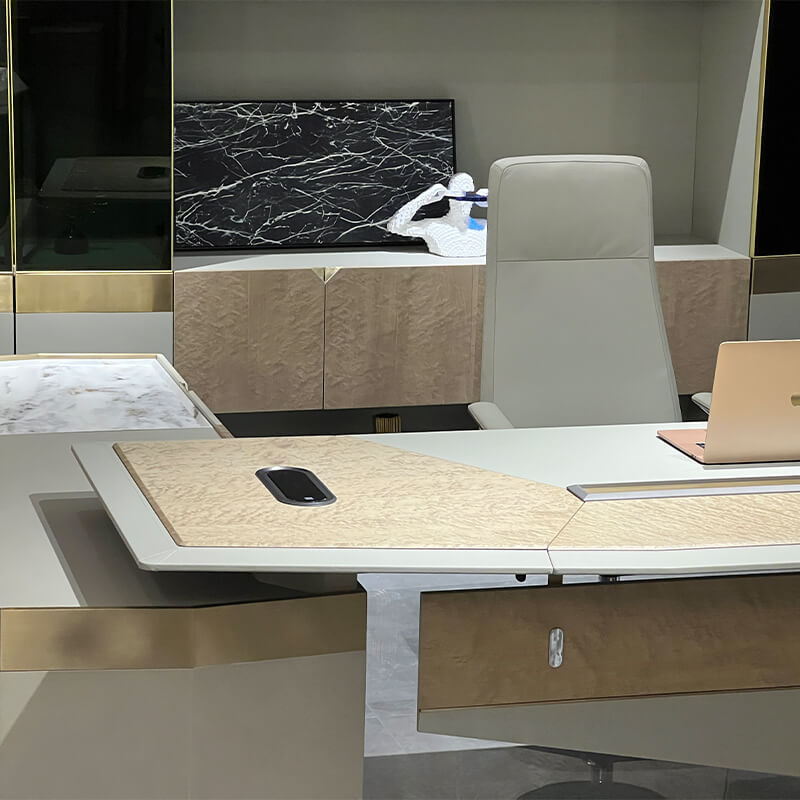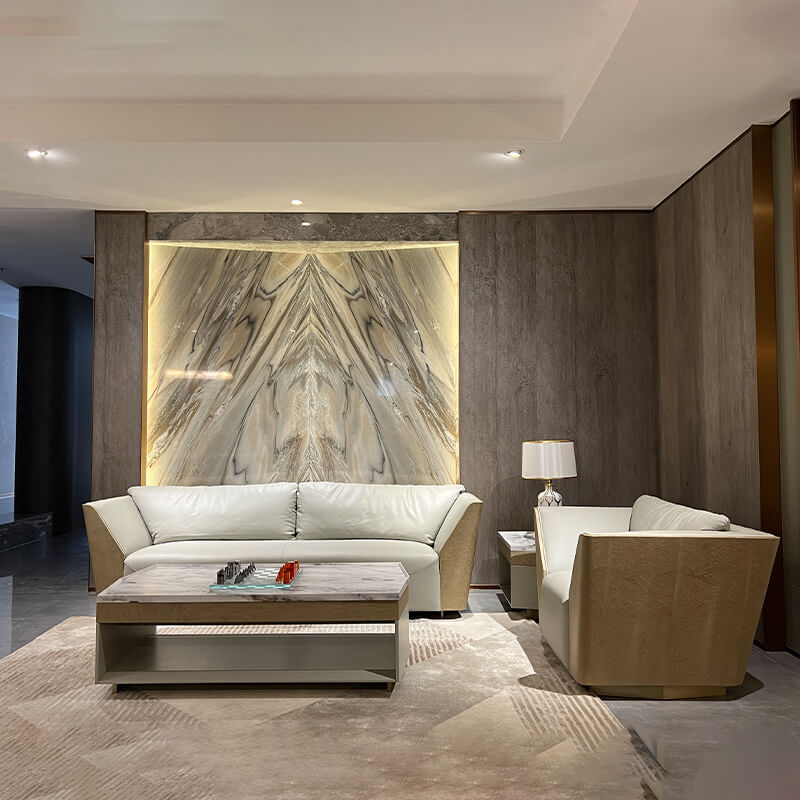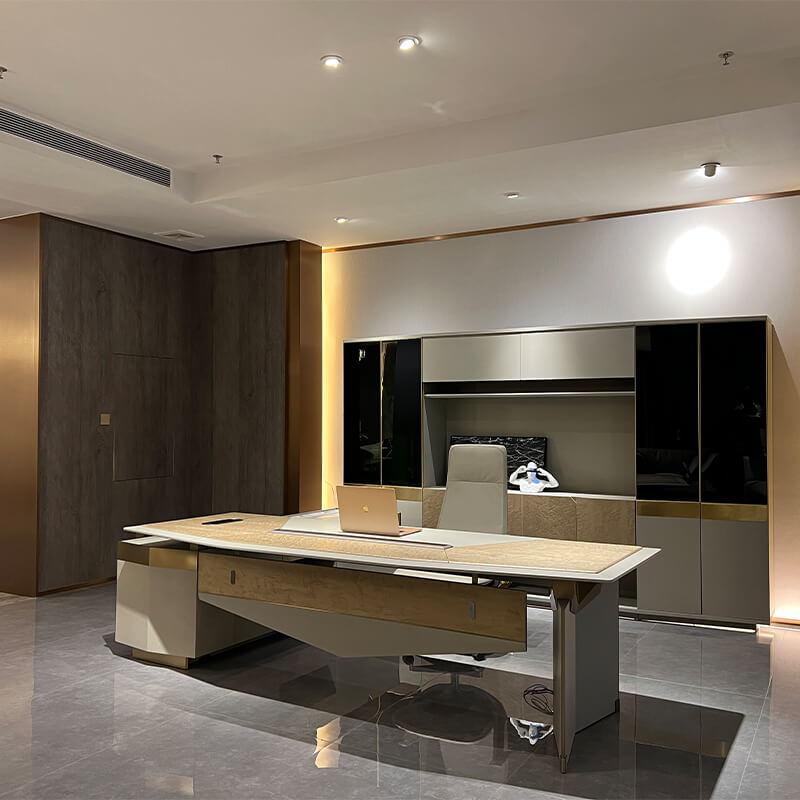
October 15,2025
admin
In today's rapidly evolving business environment, the design of commercial furniture is no longer confined to traditional functions and forms but exhibits a series of remarkable innovative trends. These trends not only reflect the changes in society, technology, and culture but also offer entirely new ideas and possibilities for enterprises to create unique and efficient office and commercial spaces.
With the rapid development of technologies such as the Internet of Things and artificial intelligence, intelligence has become one of the core trends in commercial furniture design. Nowadays, commercial furniture increasingly incorporates a variety of intelligent functions to enhance user experience and work efficiency. For example, a smart desk can automatically sense the user's height and sitting posture through built-in sensors and adjust the desktop height to the most suitable position, reducing the adverse effects of prolonged sitting. Meanwhile, some conference tables are equipped with advanced wireless charging functions, high-definition video conferencing systems, and intelligent interactive interfaces. Participants can easily share documents and conduct remote collaborations, as if they were physically present in the meeting, greatly breaking through the limitations of space and geography. In addition, the combination of intelligent lighting systems and furniture is becoming more and more common. It can automatically adjust the brightness and color according to the ambient light and human activities, creating a comfortable and energy-efficient lighting environment and further enhancing the intelligence level of the office space.

The increasing awareness of environmental protection has led commercial furniture manufacturers to place greater emphasis on sustainability in the design process. The use of eco-friendly materials has become a mainstream trend, which not only helps reduce the negative impact on the environment but also meets consumers' demands for green products. Renewable materials such as bamboo and recycled wood are widely used in furniture manufacturing. Bamboo grows rapidly and has high strength and good toughness, making it an ideal alternative to wood. Recycled wood gives new life to discarded wood. Through special processing, it can be made into various beautiful and durable furniture parts. In addition, some new types of eco-friendly synthetic materials have emerged. They have advantages such as degradability and low VOC (Volatile Organic Compounds) emissions, reducing the impact on indoor air quality while ensuring the performance of the furniture. In terms of design, the detachability and recyclability of furniture have also received more consideration, facilitating the recycling and reuse of parts after the end of the furniture's service life and reducing waste generation to achieve resource recycling.

The functional requirements of modern commercial spaces are becoming increasingly diverse and flexible, which requires commercial furniture to have stronger adaptability. Therefore, the design concept of flexibility and multi-functionality has received more and more attention in commercial furniture manufacturing. For example, foldable and retractable desks can be easily adjusted in size according to actual usage needs, meeting the compact space requirements for individual work and expanding into a larger work surface during team collaborations or meetings. Modular sofa and seating systems allow users to freely combine according to the space layout and usage scenarios, creating different rest, communication, or reception areas. Some storage furniture is also designed with hidden multi-functional components, such as a reversible desktop and an extendable folding bed, enabling a single piece of furniture to meet multiple functional needs at different times, effectively increasing space utilization and reducing the furniture procurement costs and office space rental costs for enterprises.

Consumers' pursuit of personalization and uniqueness is also vividly reflected in the field of commercial furniture. To meet the specific needs of different enterprises and users, commercial furniture manufacturers are increasingly providing customization services. From the size, shape, color, material, and even functional details of the furniture, it can be customized according to the customer's requirements. Enterprises can integrate their own brand elements and corporate culture into the furniture design, creating a unique office environment and highlighting the corporate personality and brand image. For example, a technology company may customize desks and chairs with the company logo and specific technological element patterns or require the integration of specific electronic device interfaces and software systems in the conference table to meet its unique business needs. This trend of personalization and customization not only increases the added value of the furniture but also strengthens the emotional connection between the enterprise and the customer, making the furniture an important carrier for corporate brand communication.
V. Integration of Health and Comfort Concepts
In a high-intensity commercial work environment, the health and comfort of employees have become the focus of enterprises. The design of commercial furniture has correspondingly incorporated more elements of health and comfort. The ergonomic design has been further deepened and expanded, and all parts of the furniture are more in line with the physiological curves of the human body to relieve physical stress. For example, the backrest and seat cushion of an office chair adopt a design that conforms to the curve of the human spine and are equipped with adjustable lumbar support and armrests, which can effectively relieve waist fatigue and shoulder soreness caused by prolonged sitting. In addition, some furniture also uses materials with functions such as stress reduction, antibacterial, and breathability, such as memory foam and antibacterial fabrics, providing users with a healthier and more comfortable contact surface. At the same time, under the guidance of color psychology, the color selection of furniture also pays more attention to creating a soothing and relaxing atmosphere, such as using soft colors and natural color palettes to help employees reduce work stress and improve work efficiency and job satisfaction.
The innovative design trends in commercial furniture manufacturing are moving towards intelligence, sustainability, multi-functionality, personalization, and health and comfort. These trends are intertwined and mutually reinforcing, not only bringing a brand-new appearance and functional experience to commercial spaces but also providing broad innovation space and market opportunities for commercial furniture manufacturers. Only by closely following these trends, continuously exploring and innovating, can commercial furniture manufacturers remain invincible in the fierce market competition, meet the increasingly diverse and personalized market demands, and create greater value for enterprises and society.
Choose our company, Ekintop Furniture, and we will provide you with the best products and services.

